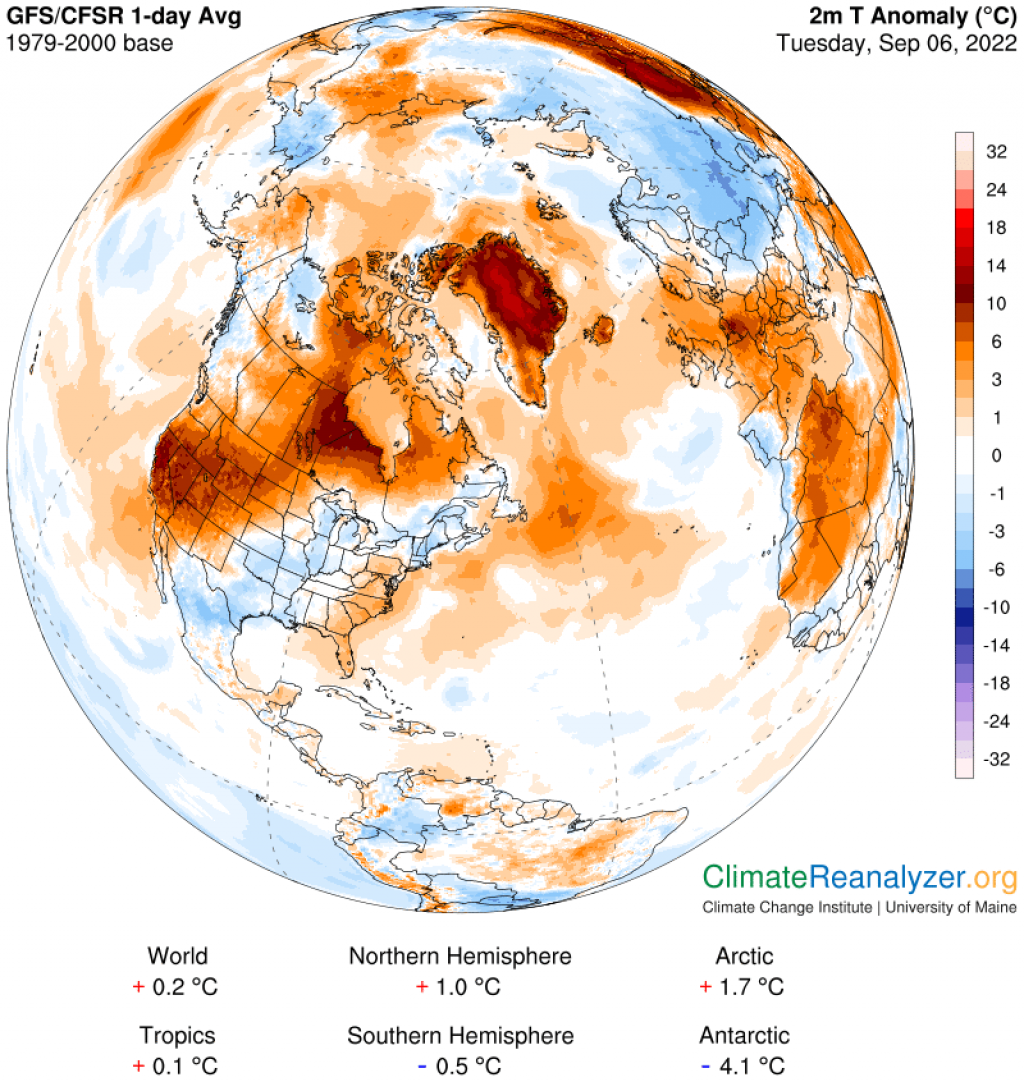

Typically the ice sheet loses ice in the summer and gains mass in the months after



Greenland’s ice sheet recorded an unusual increase in melting on September 3, 2022, according to the Arctic Risk Platform, a global team of Arctic experts. This spike is due to warming in the Arctic region, they said.
The melt area recorded on the day was 592,500 square kilometres.

The average melt extent of the ice sheet for that day during 1991-2010 was 10,000-20,000 sq km, according to the data.
“It is very unusual for September to have so high a melt area,” Jason E Box, professor in glaciology at the Geological Survey of Denmark and Greenland, told Down To Earth.
“Temperatures in September drop below freezing and the melt season ends around mid-September,” Julienne Stroeve, professor of polar observation and modelling at University College London.
A similar spike occurred at the end of August 2003. The melt area touched 600,000 sq km – unusual for the period.

Typically, Greenland’s ice sheet — stretching across 1.7 million sq km — melts in the summer, eventually gaining mass from snow accumulation in the following months.
It holds enough water to raise global sea levels by 24 feet, according to the United Nations National Aeronautics and Space Administration (NASA).
During 1992-2018, the ice sheet lost 3.8 trillion tonnes of ice, according to a study from the European Space Agency and NASA.
Why is this happening?
The rapid melting of the ice has been attributed to global warming by global experts. Over the last century, the average temperature of Greenland has risen by as much as 3 degrees Celsius (°C).
Greenland has recorded an anomaly of 10-17°C on September 6, 2022 compared to the 1979-2000 base, according to data from Climate Reanalyzer, an online visualiser of climate and weather datasets.

Previously, the Arctic Risk Platform had forecasted that temperature could increase 15°C above average in the central high-elevation regions of the ice sheet.
“This has led to quite unusual melting for this time of year over the ice sheet,” Stroeve pointed out.
Further, weakening jet streams — strong winds blowing from west to east — could also be involved. They act as a boundary, separating the warm air blowing from the equator and the cool air from the poles.
This pattern emerges due to the temperature difference. As the pole warms due to climate change, the temperature difference has dropped, lowering the velocity of the jet stream.
Consequently, the jet streams meander, bringing dry winds to Europe from the south and north.
“The warm air is being pumped from the south by a strong and large northward swing in the jet stream,” Jennifer Francis, senior scientist, Woodwell Climate Research Center, told DTE.
The rapidly warming Arctic, she said, may be one of the factors responsible for the large waves.
A recent study shows that the Arctic has warmed nearly four times faster than the rest of the world since 1979.
Box suspects atmospheric rivers — bands of moisture stretching from the tropics to higher latitudes — could be responsible.
Atmospheric river transports rainfall to Greenland, according to the paper. “There is an increase in moisture-laden atmospheric rivers encountering Greenland,” Box highlighted.
The September spike may have some impacts depending on the duration of the melt. “Several days of much-above temperatures over Greenland will cause the surface of the ice cap to melt more than usual, adding water to the ocean and accelerating sea-level rise, Francis said.
This melt event, Stroeve added, will certainly increase the overall mass loss for 2022 unless it is compensated by more precipitation. “But that remains to be seen,” she highlighted.
Greenland could experience more of such episodes in the future if the Arctic and the world continue to warm, Box highlighted.
We are a voice to you; you have been a support to us. Together we build journalism that is independent, credible and fearless. You can further help us by making a donation. This will mean a lot for our ability to bring you news, perspectives and analysis from the ground so that we can make change together.

Comments are moderated and will be published only after the site moderator’s approval. Please use a genuine email ID and provide your name. Selected comments may also be used in the ‘Letters’ section of the Down To Earth print edition.